Ascwg Qual Round Df Challenges Writeup
Hello guys, for the fourth year in a row, I’ve had the honor to write the Digital Forensics for Arab Security Cyber War Games 2023. This year, I wanted to target different vectors such as blockchain and some deep dive memory forensics. So without any further adue, let’s get into the writeup :D.
First challenge:I thought I could trust you.
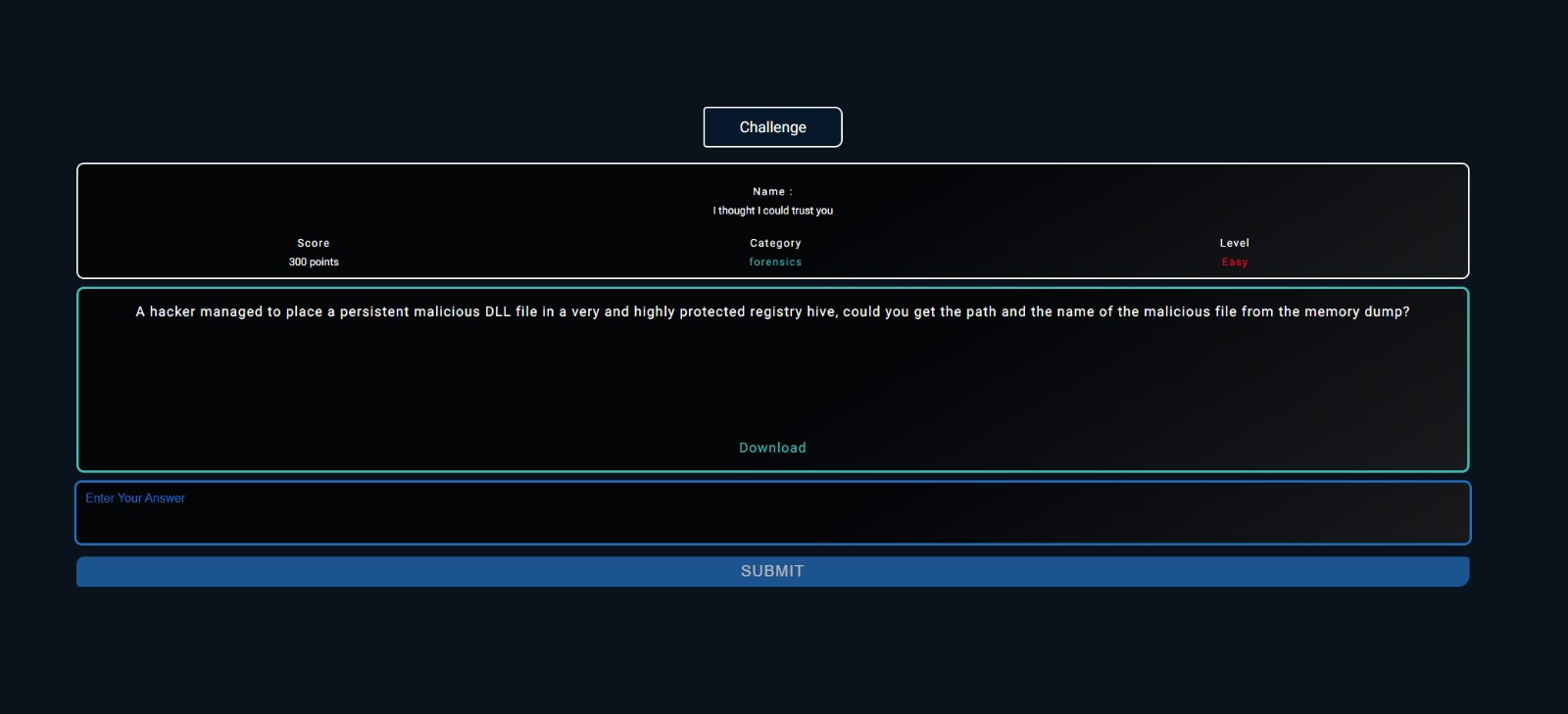
Description:A hacker managed to place a persistent malicious DLL file in a very and highly protected registry hive, could you get the path and the name of the malicious file from the memory dump?
Difficulty:Easy
Flag Format:ASCWG{registry key without HKCU or HKLM-name of the dll}
From the description and the challenge’s name, we are looking for a certain registry hive that can’t be manipluated that easily, and windows itself relies upon to store the most common DLLs, basically we’re looking for known DLLs registry hive.
Looking at the memdump, we find out it’s a .vmem file, which is for VMware machines, volatility2 could handle such files, but since it can’t identify the later releases of windows past 1904 release, it won’t provide the correct output needed, so we’re gonna use volatility3.
Actually I meant for that to happen since volatility2 is becoming more and more obsolete, and yes it does its job, but we're starting to rely and use volatility3 so I wanted the players to learn how to use it.
Checking volatility3 plugins we find this plugin windows.registry.printkey.PrintKey, which can help us print the registry keys.
To provide more visibility we use the plugin’s flag --recurse.
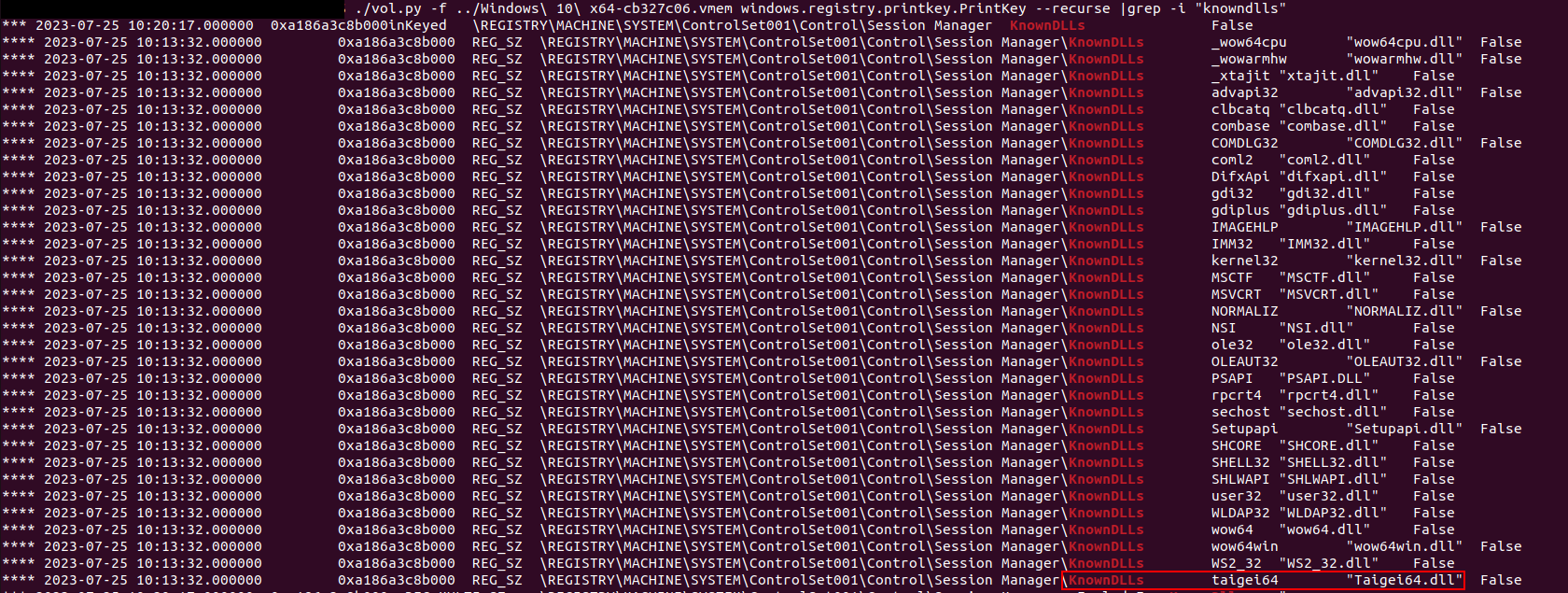
KnownDLLS being one of the crucial registry hives, it can’t be manipulated that easily, and that DLL’s name isn’t that normal, hence we get the flag.
Flag:ASCWG{\SYSTEM\ControlSet001\Control\Session Manager\KnownDLLs-Taigei64.dll}
Second Challenge:root of evil.
.jpeg)
Description:During our investigation in the memory dump from the first challenge, our investigator stumbled upon a signed malicious driver that wes deployed on the machine, could you get the address of the windows API functions, which the driver was using?
Difficulty:Easy
Flag Format:ASCWG{Address1-Address2}
Okay, so we need to go back to the memdump and see if it has any malicious drivers, using volatility3. We will use plugin called windows.modscan.ModScan, so let’s see what drivers we have.

We find that naughty driver hiding in what it seems to be a normal place, basic hiding in plain sight 101 for malwares and malicious drivers.
This driver is in fact a signed malicious driver part of the blackcat ransomware gang malwares
We use the same plugin but provide its additional flag, which is --dump, to dump all the drivers.

We then open the dump for the driver in ghidra or any decompiler (I prefer using ghidra) or debugger you choose, and we get the functions it’s importing.
After import the .dmp file, we navigate to the imports folder, and we find it imports to functions from HAL.DLL, and ntoskrnl.exe
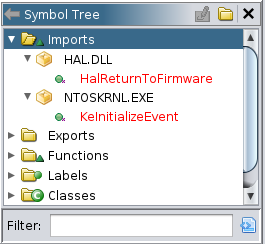
We click any of them and we get their address.
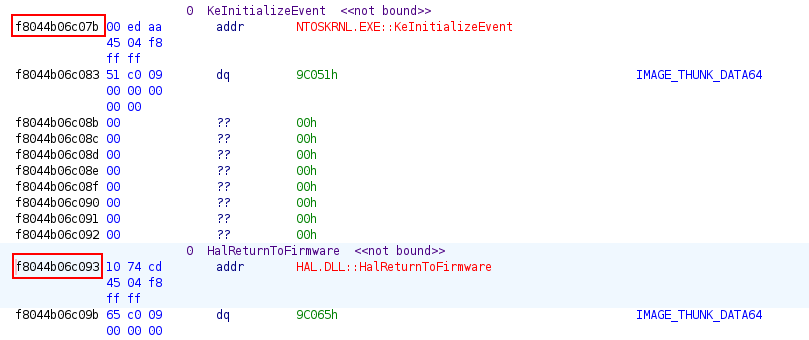
Flag:ASCWG{f8044b06c093-f8044b06c07b}
I also added a meme for anyone who thought they could cut through the memdump and just use strings with ASCWG :’D.
the meme: 
Third Challenge: Track a coin from your crypto O valley of plenty
.jpeg)
Description:During the investigation in one of the cases, our forensics analysts were tasked with tracing the following transaction hash which occured on a trial network, and get the first address who sent money. Could you find that address?
Transaction Hash:0xa150ff06619b927cc323f16984a679a24b07265f1c1a664f1c729177929cebae
Difficulty:Medium
First and foremost, before going into any details about this challenge and the next one, as they are both related to blockchain and cryptocurrency, I’d like to give a huge shoutout to my dear friend and colleague. One of the few pioneers in the world of cryptocurrency investigation in Egypt and a great addition to our DF team: Khalid ElSergany as he helped me create these challenges.
In this challenge we are presented with a transaction hash, and in the description it’s stated that the network is trial network. Okay, let’s get digging.
There are some test networks that make us try different techniques with crypto to avoid losing money in real in transactions, chief among them is sepolia etheruem, and this is what was meant by trial network in the description.
Okay, now let the actual show begin. We will submit the transaction has we are provided with, and we get the following.
 Details _ Etherscan — Mozilla Firefox.png)
Let’s take a step back to know where are heading, we are tasked with tracing this transaction to get the first address sent money to the receiver’s wallet. Sounds easy :’D
By simply clicking on the address, which received the coin, we get all the transactions that occured from and to that wallet.
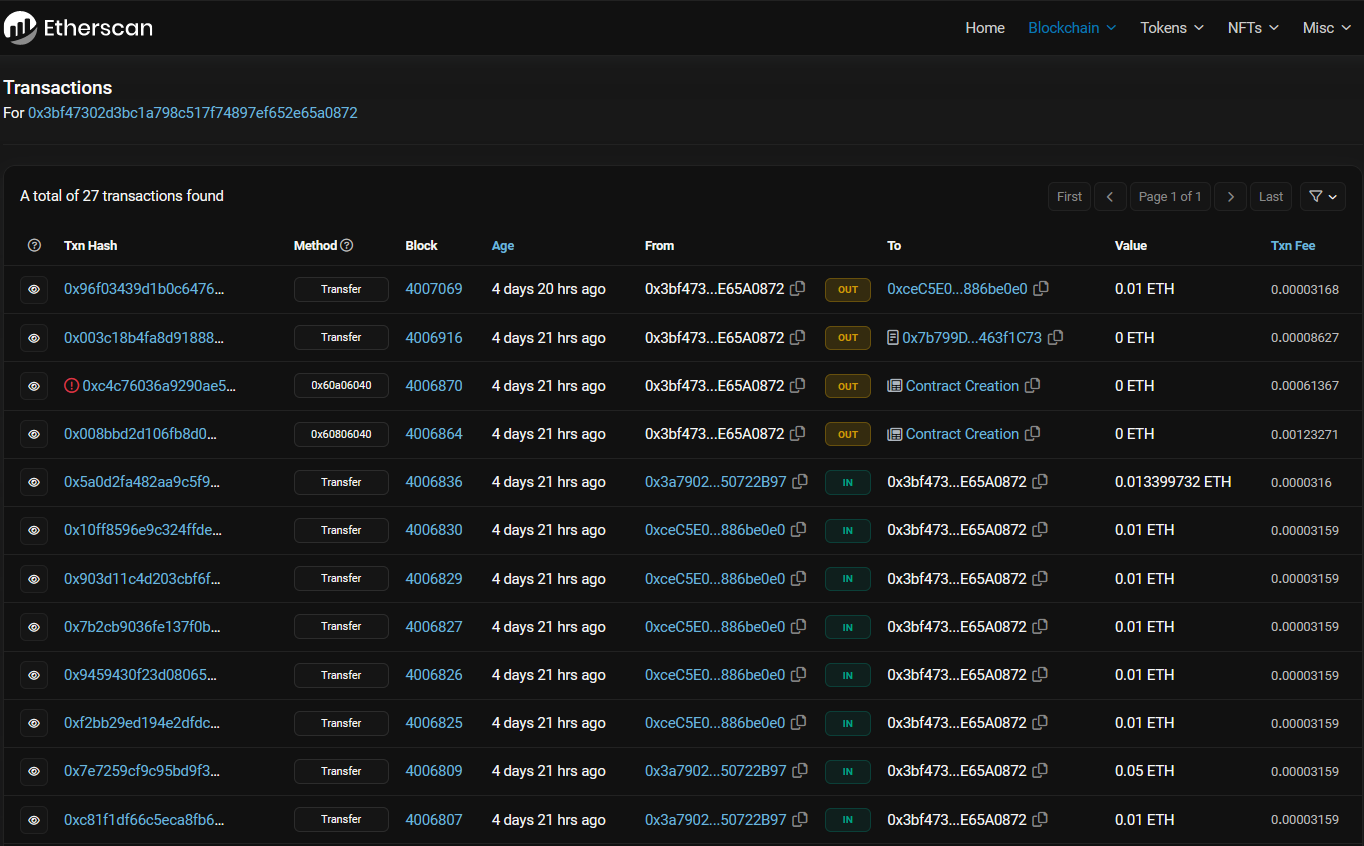
We scroll alllllllllllll the way down and we find that first transaction we are tracing.

Clicking on that transaction, we find the address which sent 0.5ETH.
 Details _ Etherscan — Mozilla Firefox.png)
Flag:ASCWG{0xEDaf4083F29753753d0Cd6c3C50ACEb08c87b5BD}
Fourth Challenge: We have a new contract for you
Description:During further investigation on the wallet that received money that we found from the transaction hash in the previous challenge, we noticed there's a token that was generated, and used to send money as part of money laundring. Could find the last address that received tokens from this contract, and the address of the smart contract?
Flag Format:ASCWG{contract address: last wallet address}
Okay, this is a LIL bit tricky. In this challenge we are presented with a smart contract which helped in money laundring, and we are tasked with getting the address of that contract and the last address which received any money from it.
Let’s first examine the transactions from the previous challenge and see the smart contract transactions.
If we looked just above the first transaction shown before, we can see there’s a contract creation.

By clicking on contract creation, we get the first part of the flag, which is the contract’s address.
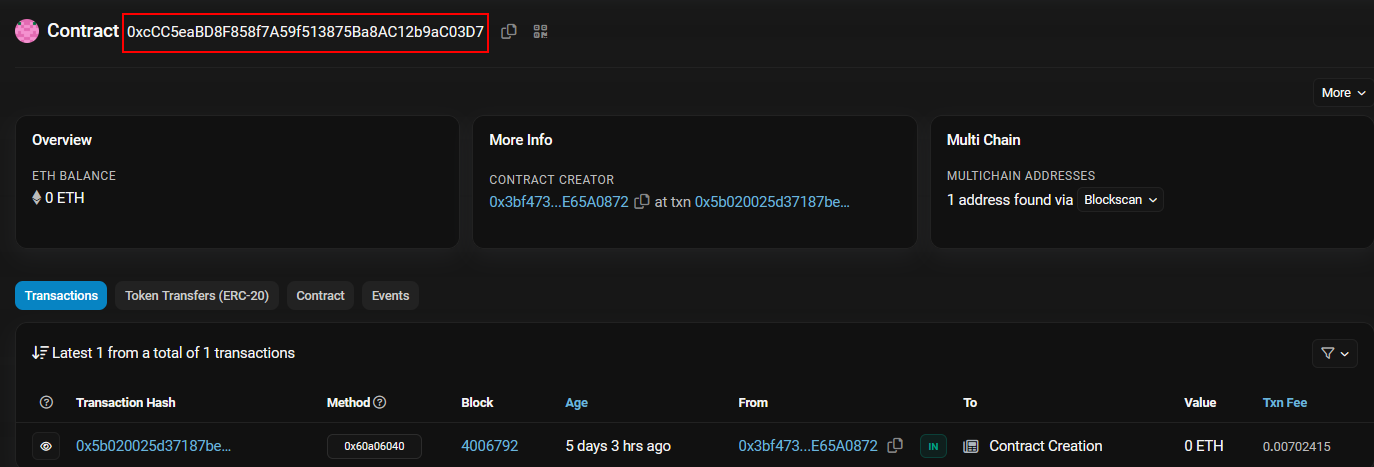
Contract address:0xcCC5eaBD8F858f7A59f513875Ba8AC12b9aC03D7
Now let’s get back to the transactions page and see the rest of them. We notice there are 3 transactions.
Here comes the tricky part, let’s investigate the last transaction that occured with this contract, which occured from an address that ends with be0e0 we find a lot of transactions both out and in, but we only need the last sending address, which is ending with B97.
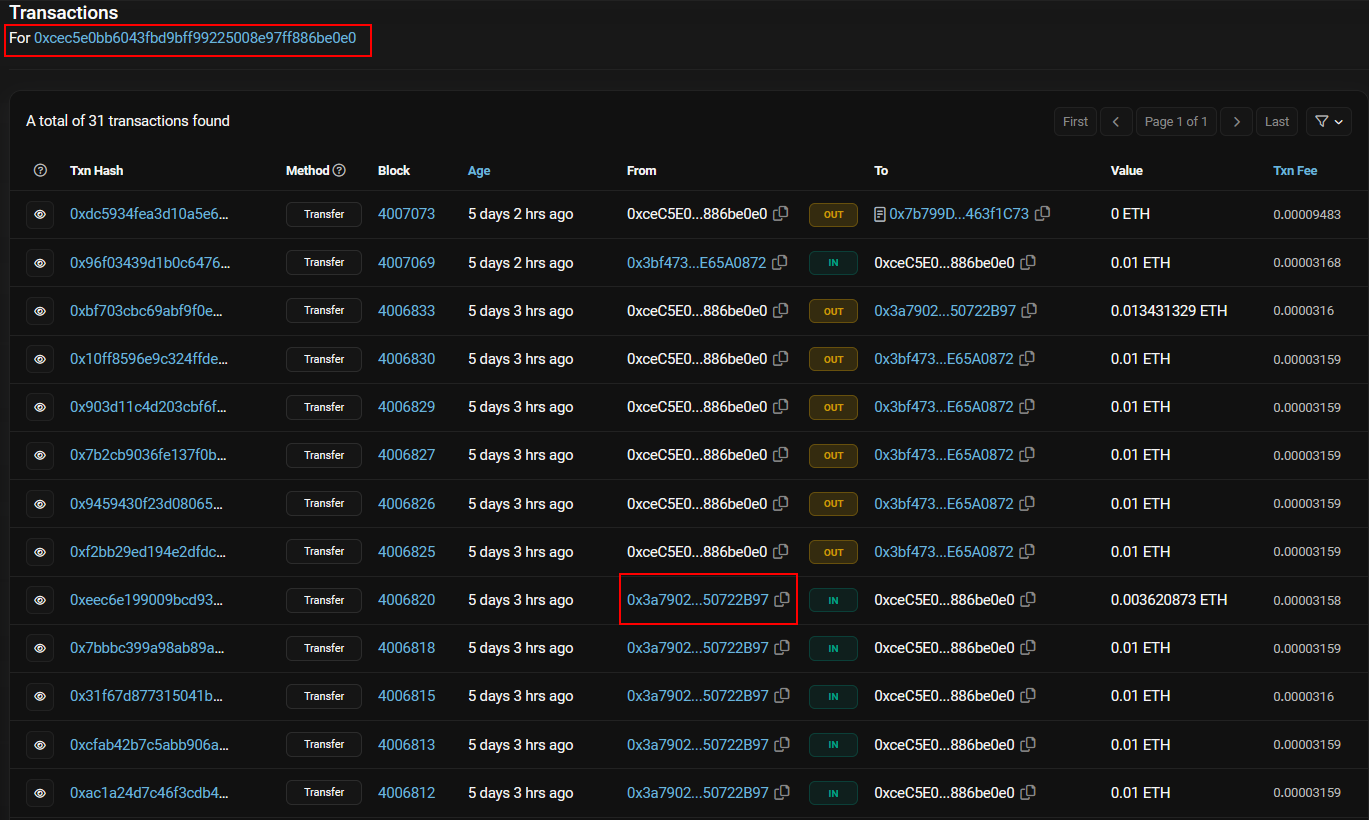
And we get the next part of the flag.
Flag:ASCWG{0x7b799DFbbfD91ECA3E82F2378455ab09463f1C73:0x3a79022e90fF621cd3Cc54FE95873E1A50722B97}
Fifth Challenge: Baby, I’m a killer.
Description:A hacker managed to install and deploy another kernel driver in the same machine from which we received the memory dump in the first two challenges, Could you find when it was first installed and its first key value?
NOTE: you need to download this memdump, as it’s entirely different from the one in the first two challenges.
Difficulty:Hard
Flag format:ASCWG{YYYY-MM-DD-HH:MM:SS-(timezone)- full key value}
Okay, this is another memory dump, which also has a kernel driver, that was installed in system32 folder and blended in with the other drivers. Let’s first see it.
Using out favourite tool volatility3, we use a new plugin called windows.modules.Modules, and wait for it to list all the drivers.

At the end of the list we notice a driver called pplkiller.sys, and the challenge’s name has the word killer in it, so it might be it, OR if we prefer the long road. We could simply google it :D

Okay, so now what? What we need now, volatility won’t be able to provide us with. We need to use another tool called MemProcFS.
the huge advantage of MemProcFS that it helps to navigate the memory dump like any normal drive via the GUI instead of relying on commands and waiting for the output. It mounts the memdump as a mount share.

Quick Note:You can run it either from CMD or powershell, but I just prefer powershell.
Okay, now we naviagte to the driver in question which is named pplkiller.sys


After looking at the driver’s files, we found nothing useful, so let’s check the service folder, and we navigate to the folder which has the same driver’s name i.e pplkiller.sys
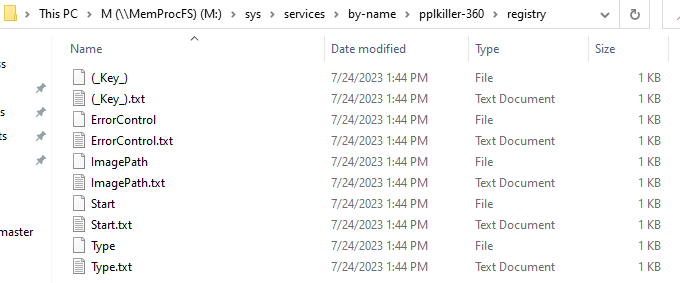
Opening the first file with the name (_key_.txt), we get the flag.
Flag:ASCWG{2023-07-24-10:44:36-UTC-ffffde09bdc56000:003bfd28}
This concludes this year’s challenges I wanted this year to be different than last year, and I hope the players enjoyed solving the challenges and learned something new in the process.
Congratulations to the winning teams, and I hope to see you all in the final round.